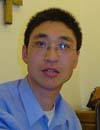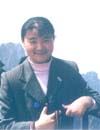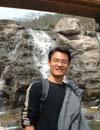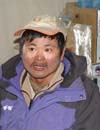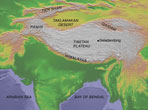
Click on image to view larger Mt. Geladandong (33f 12' N, 91f 09'E, 5800 m) is located in the Tanggula Mountains in the central region of the eastern Tibetan Plateau, and is the source region of the Yangtze river (the third longest river in the world). Grassland steppes lie to the south and east, and the regions to the north and west are arid. Summer precipitation is dominated by plateau monsoon circulation (Murakami, 1976), and winter precipitation is limited, though occasional large snowfall events result from westerly disturbances (Seko and Takashashi, 1991). Previous studies suggest that the Tanggula Mountains mark the northern boundary of the influence of the South Asian monsoon, and that north of this range recycled rainfall from continental precipitation is the dominant process (Tian et al, 2001; Araguas-Araguas et al., 1988).
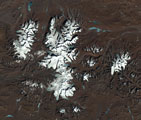
Click on image to view larger In the spring of 2004 an 87 m ice core was recovered from the South Geladandong Flat Topped Glacier in collaboration between the Climate Change Institute and the Joint Key Laboratory of Cryosphere and Environment (in association with Cold and Arid Regions Environmental and Engineering Research Institute (Lanzhou), Institute of Tibetan Plateau Research (Beijing), and Chinese Academy of Sciences/Chinese Academy of Meteorological Sciences (Beijing), China). This fall we will be returning to Geladandong to identify another ice core drilling site, and intend to recover an additional ice core. This core, in addition to the 2004 Geladandong ice core, will be used to investigate the climate and environmental variability of the Tibetan Plateau during the late Holocene. Dr. Shichang Kang from the Tibetan Plateau Institute is the leader of the expedition.




